










integrately
20 Million+ Ready Automations For 1100+ Apps-Integrately
Tags:Automationsintegrately alternatives integrately reviewsintegrately reviews & alternatives 2024,feature,pros and cons,price
What is integrately?
Integrately is a powerful integration platform that simplifies the process of connecting disparate applications and services within your organization. It acts as a bridge between various software tools, enabling them to communicate and work together seamlessly. This eliminates the need for custom coding and manual data transfer, thereby saving time and reducing the risk of errors.
integrately official site: https://integrately.com/
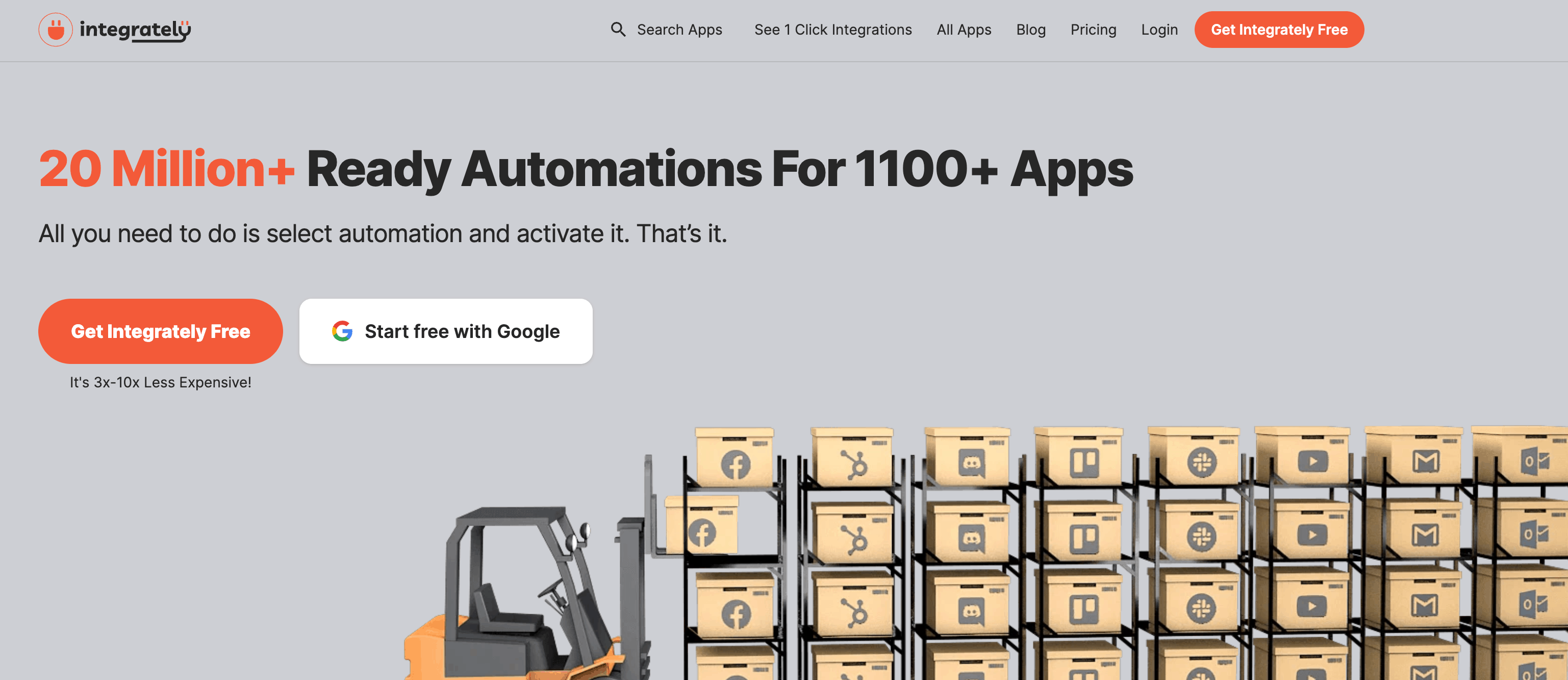
Key Features of Integrately
#### 1. **No-Code Integration**
– **Pros**: Empowers non-technical users to integrate applications without writing code, making it accessible to a wider audience.
– **Cons**: May lack the flexibility and customization options that developers would typically implement with custom code.
#### 2. **Wide Range of App Integrations**
– **Pros**: Supports thousands of applications, covering a broad spectrum of business needs from CRM and e-commerce to project management and HR.
– **Cons**: Finding the exact integration you need might require searching through a vast list of options.
#### 3. **Pre-Built Templates**
– **Pros**: Offers pre-built integration templates for common use cases, speeding up the integration process.
– **Cons**: Might not cover every specific scenario, requiring customization for unique integration needs.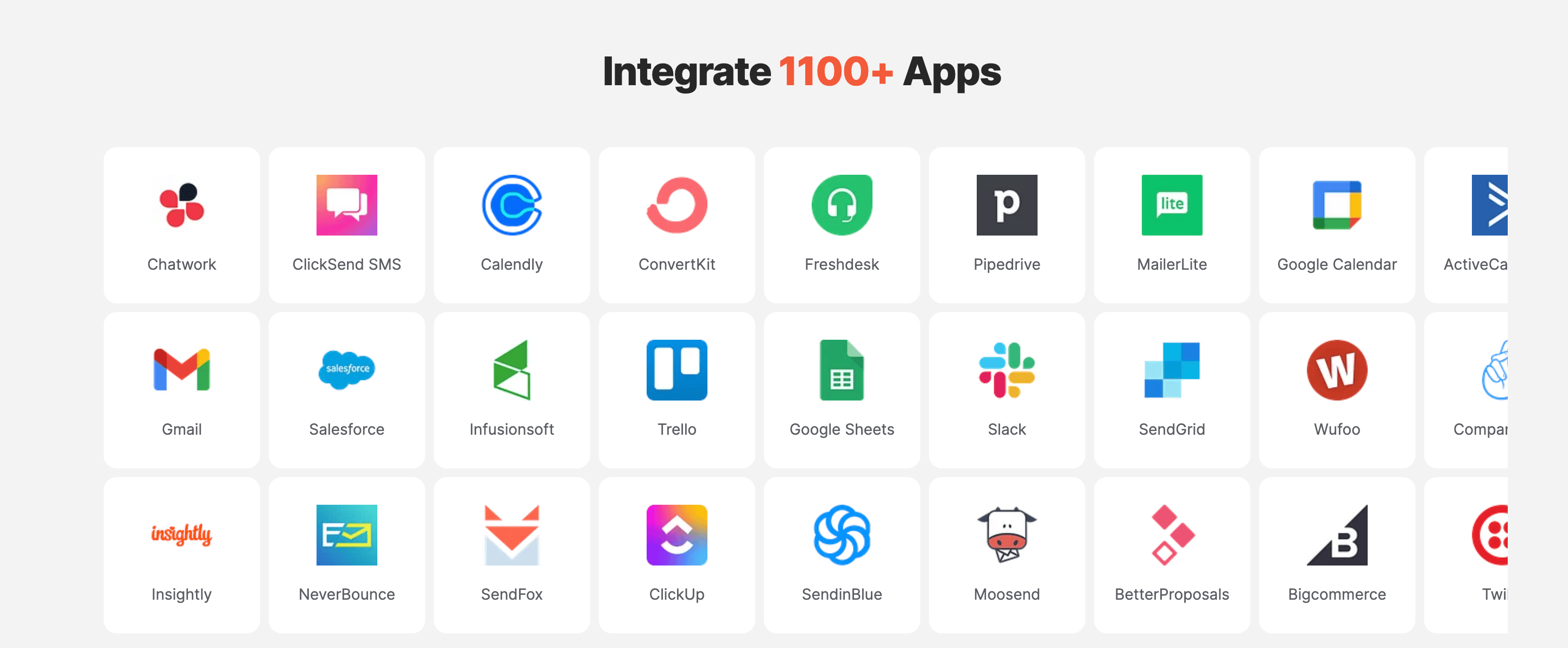
#### 4. **Visual Designer**
– **Pros**: Provides a visual designer for mapping out integrations, making the process intuitive and straightforward.
– **Cons**: The visual nature might limit the complexity of integrations that can be achieved.
#### 5. **Trigger-Based Workflows**
– **Pros**: Allows for the creation of trigger-based workflows, automating tasks based on events within connected applications.
– **Cons**: Setting up complex conditional logic might be challenging without technical expertise.
#### 6. **Data Mapping and Transformation**
– **Pros**: Offers tools for mapping and transforming data between applications, ensuring consistency and accuracy.
– **Cons**: The transformation capabilities might not be as robust as those found in dedicated ETL (Extract, Transform, Load) tools.
### Target Audience:
Integrately is designed for businesses of all sizes that rely on multiple software tools to operate but struggle with integrating these tools effectively. This includes departments ranging from IT and operations to marketing and finance, as well as freelancers and consultants who manage multiple client projects.
### Conclusion:
Integrately stands out as a user-friendly solution for businesses looking to streamline their operations by integrating their software tools. Its no-code approach and wide range of supported applications make it accessible and practical for organizations seeking to enhance collaboration and efficiency without the overhead of custom development.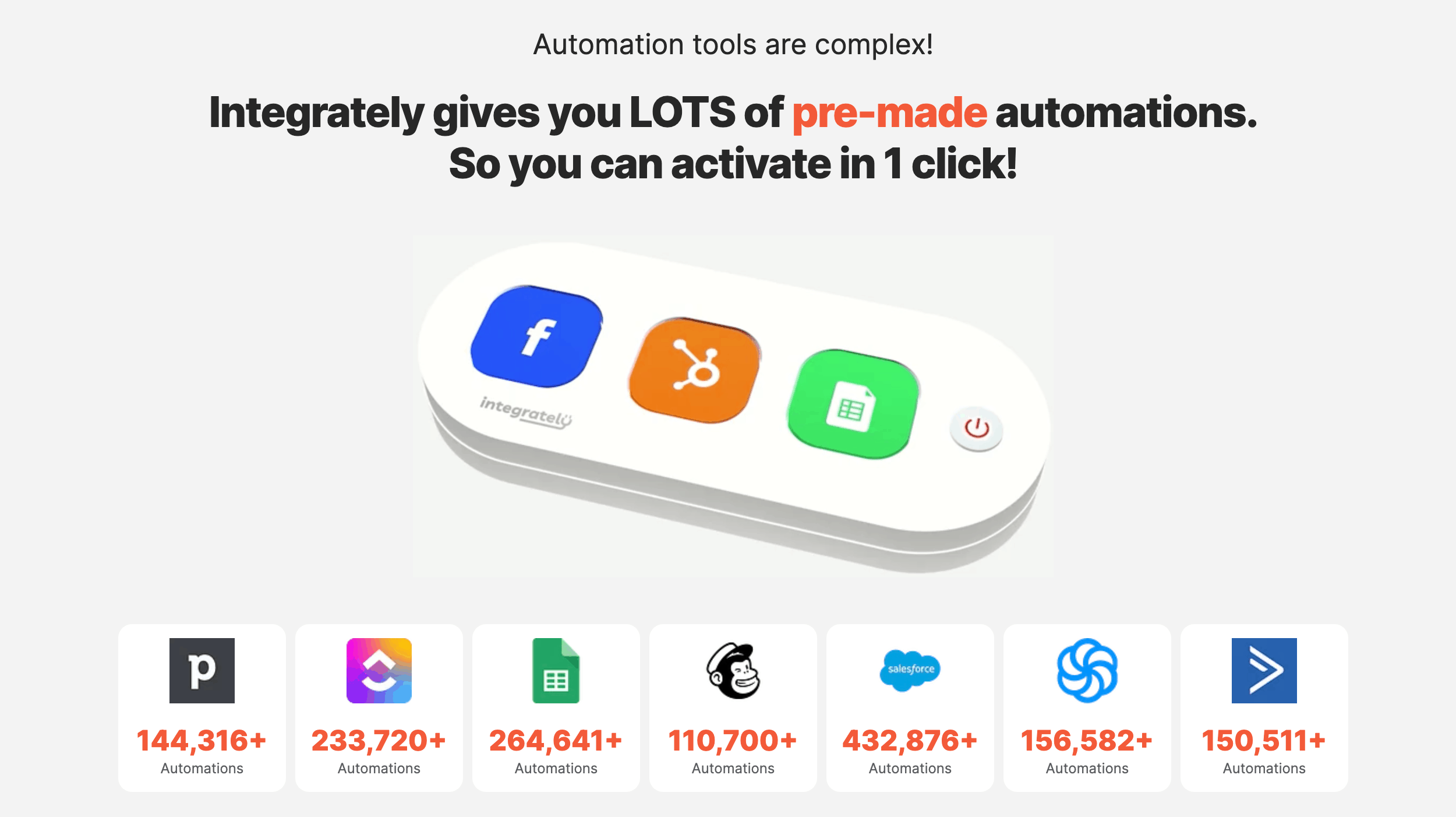
feature pros and cons
When evaluating Integrately, a platform designed to simplify application integration through a no-code approach, it’s crucial to consider its features in terms of both their advantages and potential drawbacks. This balanced perspective will help in assessing whether Integrately aligns with your specific integration needs and operational goals.
Key Features of Integrately
#### 1. **No-Code Integration**
– **Pros**: Enables users to connect applications without needing to write code, democratizing integration capabilities across teams.
– **Cons**: The ease of use might come at the expense of flexibility and customization options that are possible with custom coding.
#### 2. **Wide Range of App Integrations**
– **Pros**: Supports a vast array of applications, catering to a broad spectrum of business needs.
– **Cons**: Navigating through thousands of available integrations might be overwhelming, and not all specific integrations may be available.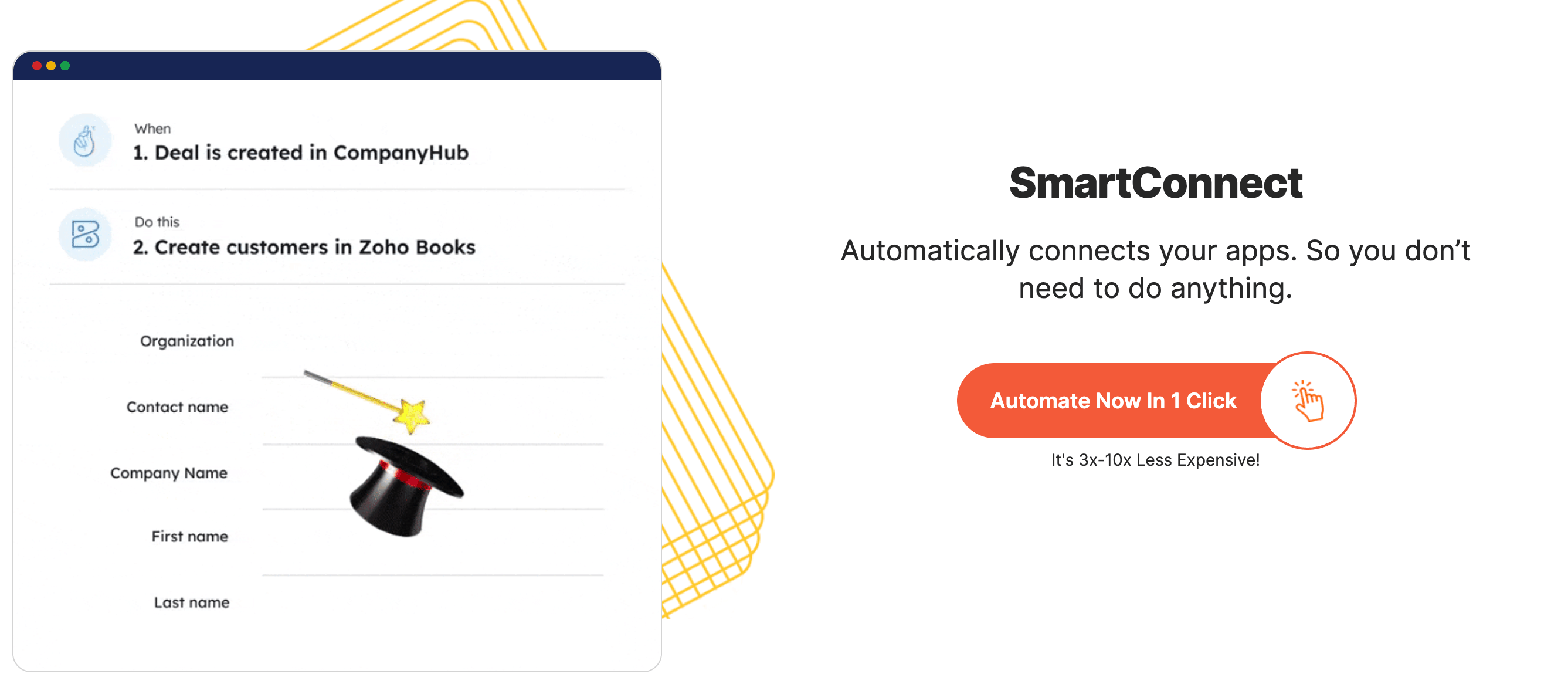
#### 3. **Pre-Built Templates**
– **Pros**: Accelerates the integration process by providing ready-made templates for common scenarios.
– **Cons**: While convenient, these templates might not cover every unique integration case, necessitating customization.
#### 4. **Visual Designer**
– **Pros**: Offers a user-friendly interface for designing integrations, making the process more accessible to non-technical users.
– **Cons**: The visual nature of the designer might limit the complexity of integrations that can be effectively represented.
#### 5. **Trigger-Based Workflows**
– **Pros**: Allows for the automation of tasks based on triggers within integrated applications, enhancing operational efficiency.
– **Cons**: Configuring complex conditional logic and sequences might be challenging without a strong understanding of the underlying processes.
#### 6. **Data Mapping and Transformation**
– **Pros**: Facilitates the alignment and modification of data formats between applications, ensuring smooth data flow.
– **Cons**: The transformation capabilities might not be as comprehensive as those found in specialized ETL (Extract, Transform, Load) tools.
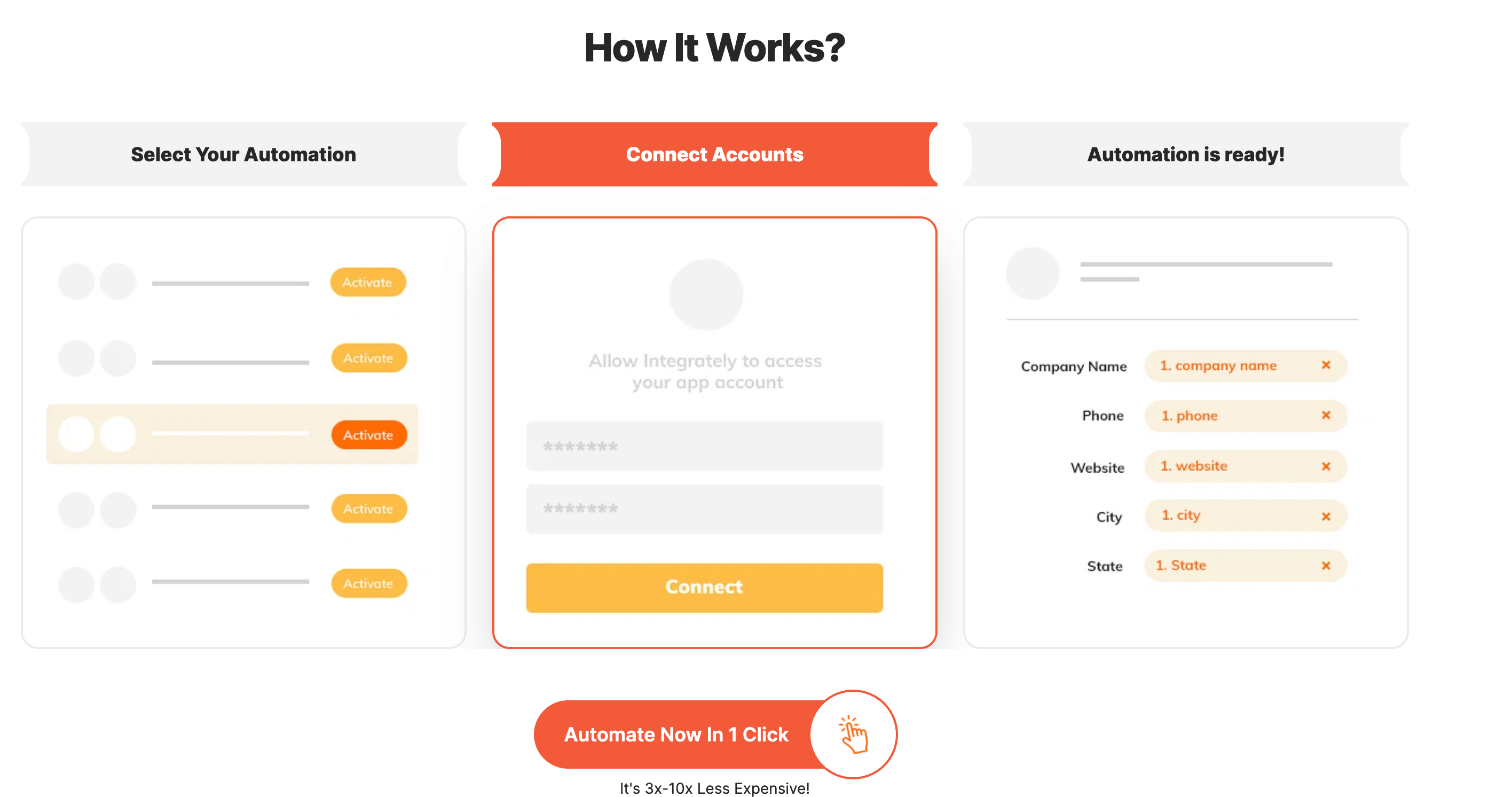
### Pros and Cons Summary:
**Pros:**
– **Accessibility**: No-code integration makes it easier for non-technical staff to contribute to integration projects.
– **Broad Coverage**: The extensive library of app integrations caters to a wide range of business needs.
– **Efficiency**: Pre-built templates and visual designers streamline the integration process, saving time and effort.
– **Automation**: Trigger-based workflows automate repetitive tasks, freeing up human resources for more strategic initiatives.
**Cons:**
– **Flexibility Limitations**: The no-code approach might restrict the level of customization achievable compared to custom-coded solutions.
– **Overwhelming Choices**: The vast number of available integrations can be daunting, potentially leading to confusion or overlooking suitable options.
– **Template Limitations**: While templates expedite integration, they might not address every specific requirement, necessitating additional customization.
– **Complex Logic Challenges**: Configuring intricate workflows and data transformations might pose challenges without sufficient technical expertise.
In conclusion, Integrately is a valuable tool for businesses seeking to integrate their software tools without the need for extensive coding skills. Its strengths lie in its accessibility, broad app coverage, and efficiency-enhancing features. However, its limitations, particularly around flexibility and the potential complexity of certain integration scenarios, should be considered in the context of your specific integration needs.
plan and price
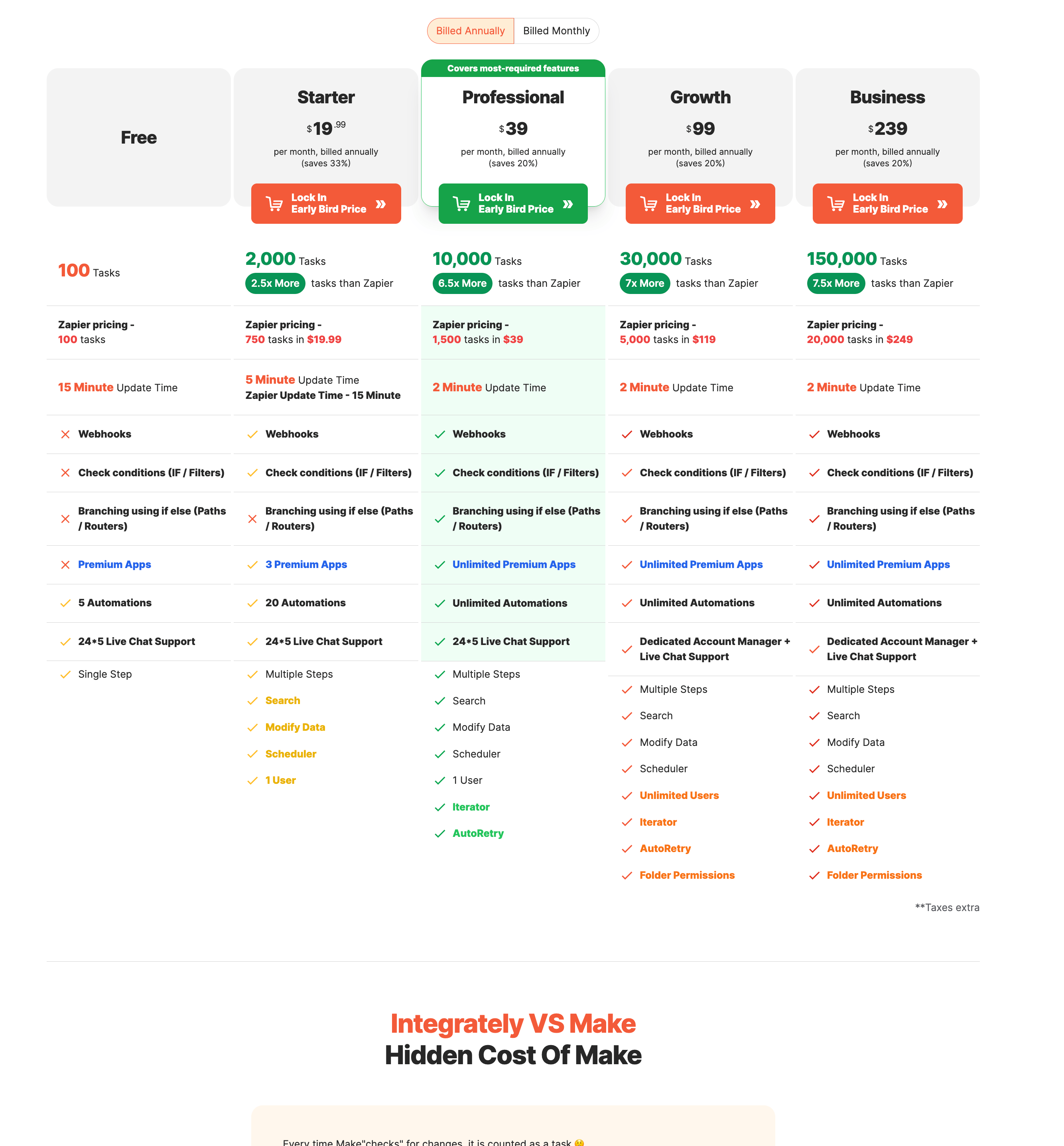
10 alternatives
For businesses and individuals looking to integrate their software tools without resorting to custom coding, there are several alternative platforms to Integrately that offer a range of features for connecting disparate applications. Each has its own set of capabilities, catering to different needs and preferences. Here are 10 alternatives, along with details about what they offer:
### 1. **Zapier**
– **Details**: Known for its simple and intuitive interface, Zapier connects over 3,000 apps, allowing users to automate workflows with “Zaps.”
– **Target Audience**: Small to medium-sized businesses and individuals looking for easy automation between apps.
### 2. **Integromat**
– **Details**: Offers a visual builder for creating complex integrations and automations, supporting a wide range of apps.
– **Target Audience**: Businesses requiring advanced automation and integration capabilities.
### 3. **Microsoft Power Automate**
– **Details**: Part of Microsoft’s suite, Power Automate focuses on integrating Microsoft products with other apps, emphasizing business process automation.
– **Target Audience**: Organizations heavily invested in the Microsoft ecosystem.
### 4. **IFTTT (If This Then That)**
– **Details**: Provides a free service that creates chains of simple conditional statements called “applets” to automate tasks across various web services.
– **Target Audience**: Casual users and hobbyists looking for quick and easy automation.
### 5. **Workato**
– **Details**: Designed for mid to large enterprises, Workato offers robust integration and automation capabilities, including custom bots and recipes.
– **Target Audience**: Businesses with complex integration needs and larger budgets.
### 6. **Parabola**
– **Details**: Aims to make data transformation and automation accessible to non-programmers, with a focus on data processing and analytics.
– **Target Audience**: Data analysts and teams working with large datasets.
### 7. **Tray.io**
– **Details**: Offers a low-code platform for building custom integrations and automations, with a focus on scalability and reliability.
– **Target Audience**: Businesses looking for scalable, reliable integration solutions.
### 8. **Resilio**
– **Details**: Specializes in IT service management (ITSM) and IT operations management (ITOM) integrations, helping organizations streamline their IT processes.
– **Target Audience**: IT departments focused on ITSM and ITOM.
### 9. **Syncari**
– **Details**: A data unification platform that syncs, cleanses, and enriches data from various sources, helping businesses maintain accurate and consistent data across their systems.
– **Target Audience**: Businesses struggling with data silos and inconsistencies.
### 10. **Cyclr**
– **Details**: Provides a developer-focused API integration platform, allowing businesses to build custom integrations quickly and securely.
– **Target Audience**: Developers and tech-savvy businesses looking for a programmable integration solution.
Each of these platforms offers unique features and capabilities, catering to a wide range of integration needs from simple automation to complex data processing and system integration. Depending on your specific requirements, such as the complexity of your integrations, your budget, and the types of applications you’re working with, one of these alternatives may be a better fit than others.


